Rare Beta-Thalassemia Mutant Detected -by YanengBIO Thalassemia NGS kit, >740 mutations
![]() 0
0
![]() 2023-12-11
2023-12-11
Original Author: Zou Yucen
Organization: Laboratory Department, Shunde Women and Children's Hospital of Guangdong Medical University
Translate and Reproduce: Yaneng BIOscience (Shenzhen) Co., Ltd.
Background Information
In β-thalassemia patients, due to insufficient β-chain synthesis in the body, excess α-chains are deposited together to form inclusion bodies. Immunoelectron microscopy analysis shows that inclusion bodies in β-thalassemia are almost entirely composed of α-chains. Hemolysis and ineffective hematopoiesis are the main pathogenic mechanisms of β-thalassemia.
Currently, thalassemia testing carried out by clinical laboratories in China usually targets the three common types of deletionα-thalassemia, the three common types of non-deletion α-thalassemia, and 17 β-thalassemia mutations, and does not cover some rare thalassemia.
This case is a patient with β-thalassemia without clinical symptoms. Common diagnostic methods for thalassemia cannot detect it, and gene sequencing is required.
Case Description
The patient is a 31-year-old female, Han nationality, originally from Shunde, Foshan, Guangdong. On February 5, 2020, a prenatal examination was conducted at the Shunde District Maternal and Child Health Hospital, including routine blood examination, preliminary screening for thalassemia, and confirmed diagnosis of thalassemia.
The laboratory test results are as follows:
Routine blood test results: HGB 128 g/l, MCV 87.3 fl, MCH 28.9 pg. See Table 1.
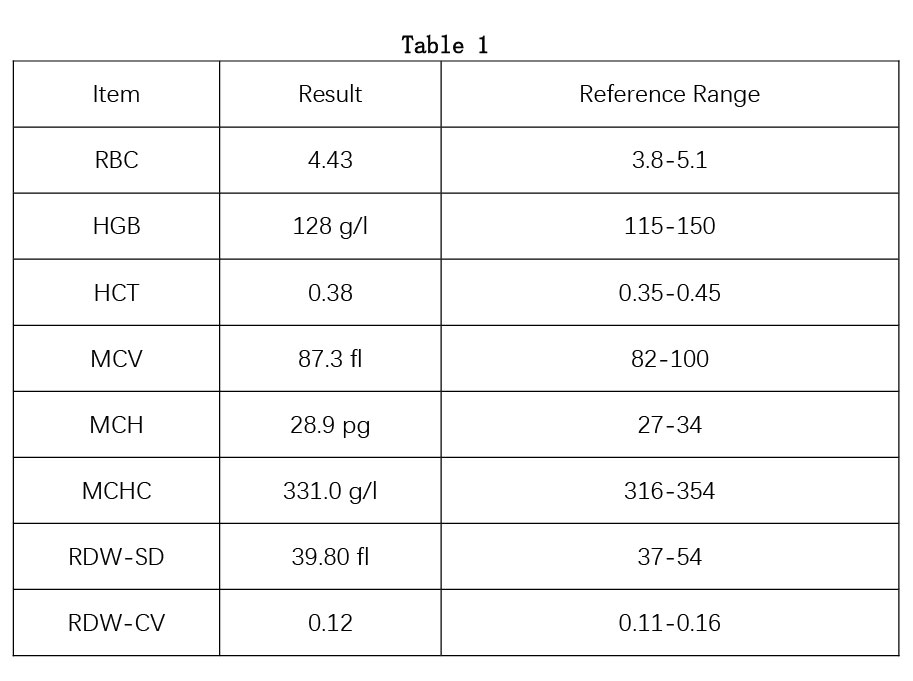
Thalassemia electrophoresis result: HbA 86.40%, HbA2 13.6%. See Picture 1.
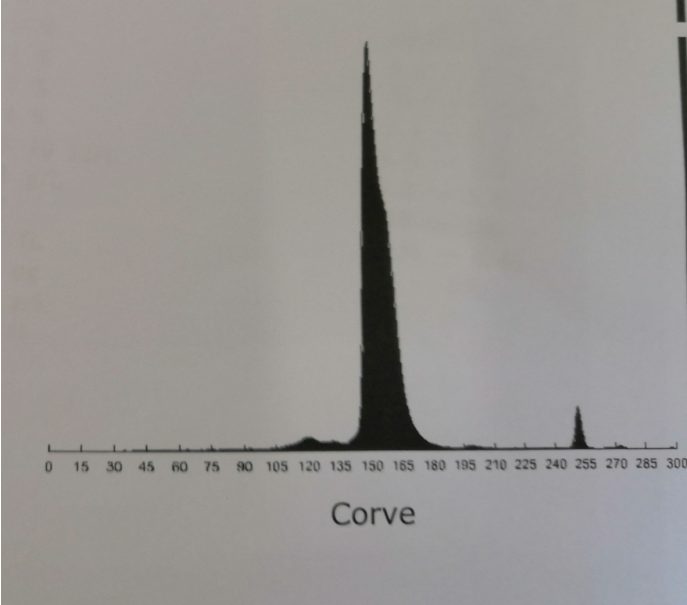
Picture 1
The blood routine results were inconsistent with the preliminary screening results for thalassemia, so further thalassemia gene testing was performed.
Results of thalassemia DNA diagnosis: Three common deletion types of α-thalassemia were not found(Alpha Thalassemia Genotyping Kit (gap-PCR)), three common α-non-deletion types of thalassemia were not found(Nondeletion Alpha Thalassemia Genotyping Kit (PCR-Reverse Dot Blot)), and 17 common β-mutant thalassemia were not found(Beta Thalassemia genotyping kit (PCR-Reverse Dot Blot)). Therefore, the available thalassemia gene test still cannot detect abnormalities. See Picture 2, 3.
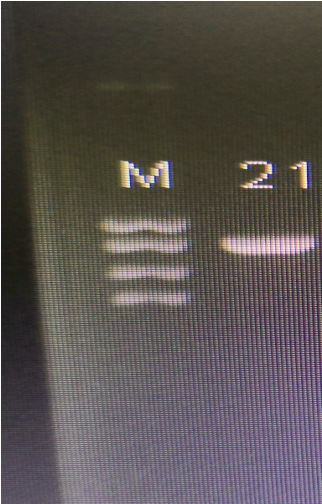
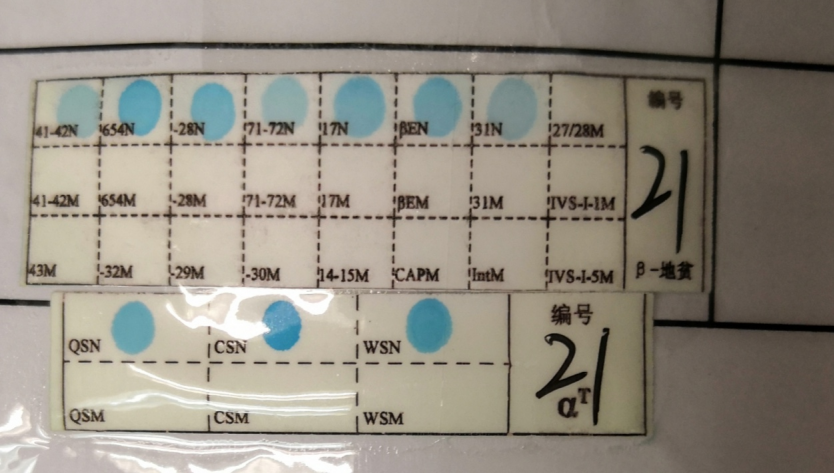
Picture 2 Picture 3
Due to the abnormal electrophoresis result, the specimen was finally mailed to Yaneng BIOscience (Shenzhen) Co., Ltd. for gene sequencing. The gene sequencing result was Hb sainte Eugenie(AGG->TGG at codon104) in beta, heterozygous mutation. HGVS name: HBB:c.313A>T. See Picture 4.
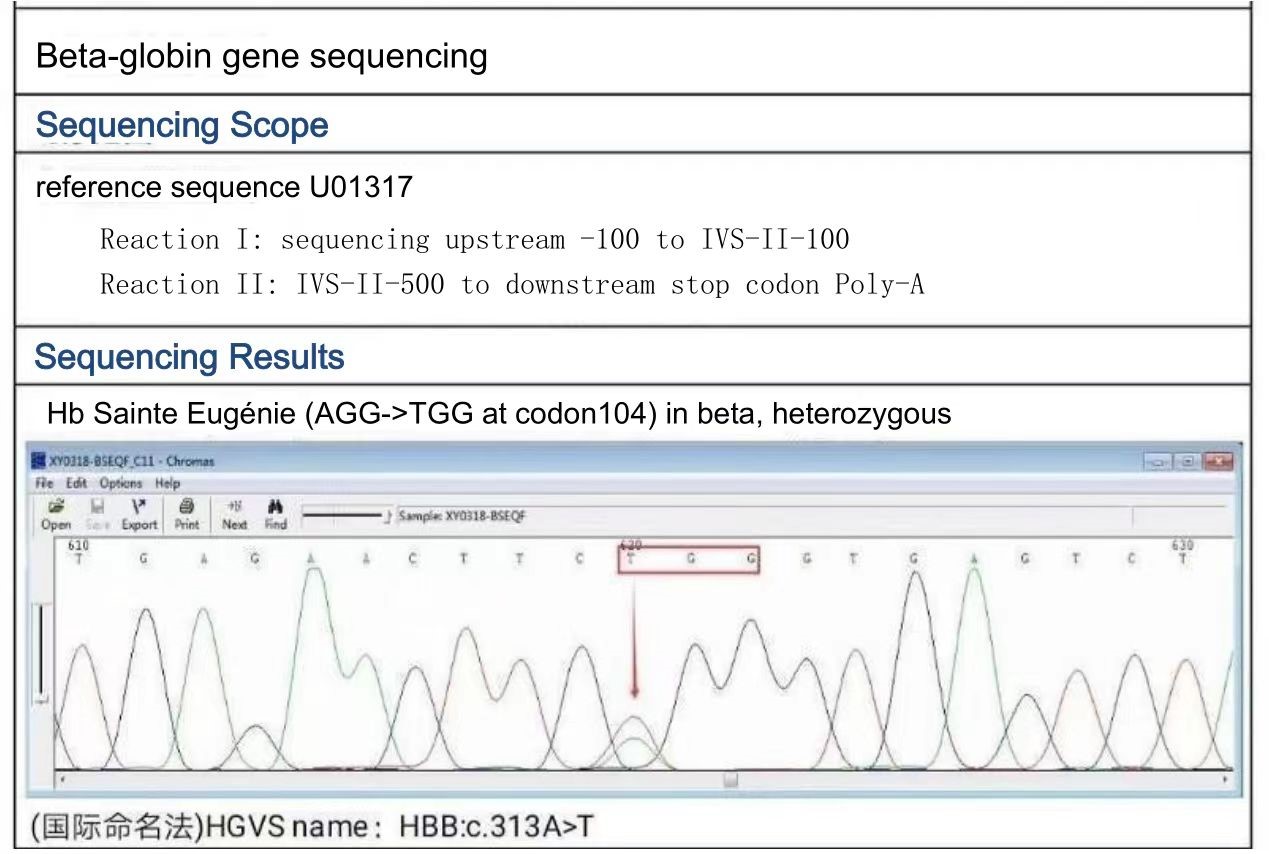
Picture 4
Case Analysis
In this case, the results of routine blood tests, preliminary screening of thalassemia, and confirmed diagnosis of thalassemia were inconsistent, and further genetic sequencing was required.
When a simple blood routine test is performed, it indicates that the patient is normal. When further preliminary screening for thalassemia is performed, it is indicated that the hemoglobin electrophoresis result is abnormal. When further genetic diagnosis is performed, it is indicated that no common genetic abnormalities are found. The final gene sequencing results revealed an extremely rare beta-thalassemia gene mutation.
This study detected the heterozygous mutation of Hb sainte Eugenie (AGG->TGG at codon104) in beta, which was discovered for the first time in China.
Summarize
During the clinical diagnosis and treatment process, especially during the prenatal screening process, the screening procedures must be strictly followed. If the routine blood results are found to be inconsistent with the preliminary screening results for thalassemia, further testing is required to avoid missed diagnosis. To clarify the thalassemia genotypes of both spouses will help provide preconception, prenatal guidance and genetic counseling to avoid the birth of children with severe thalassemia.
Expert Reviews
Review experts: Zhou Yuanqing, Zhong Hua
This case is extremely rare in the clinical testing process. The author was able to find problems in daily work, think proactively, and use existing testing methods on the market to conduct comprehensive testing and analysis of the case. It is worth learning from. The thalassemia gene is widely distributed in Guangdong and Guangxi of China, and careful screening is needed especially in prenatal diagnosis to avoid the birth of children with severe thalassemia.
Reference
[1] Guo Weixia, Ge Shijun, et al., Laboratory indicators and phenotypic analysis of a patient with HbH disease combined with a rare homozygous mutation in the β gene, Laboratory Medicine, 2019, 34 (11): 1057-1058
[2] Liang Yi, Ning Sisi, et al., Analysis of a case of prenatal diagnosis of rare beta-thalassemia, International Journal of Laboratory Medicine, 2019, 40(21):2676-2679
[3] Zhang Li, Sun Liangzheng et al., Application of hemoglobin electrophoresis and MCV in thalassemia screening, Chinese Medical Innovation, 2019, 16 (17): 139-141
[4] Zhang Qianqian, Shang Xuan, et al., Genetic modification affecting β-thalassemia phenotype, Hereditas(beijing), 2019, 4(18): 669-676
[5] Huang Jie, Yang Xu, et al., Simultaneous detection of deletion and point mutation thalassemia using NGS technology, Journal of Molecular Diagnosis and Therapy, 2019, 11 (2): 79-85,95
[6] Xie Chunshan, The application value of routine blood tests in the diagnosis of thalassemia, Chinese Contemporary Medicine, 2019, 26 (26): 97-100






